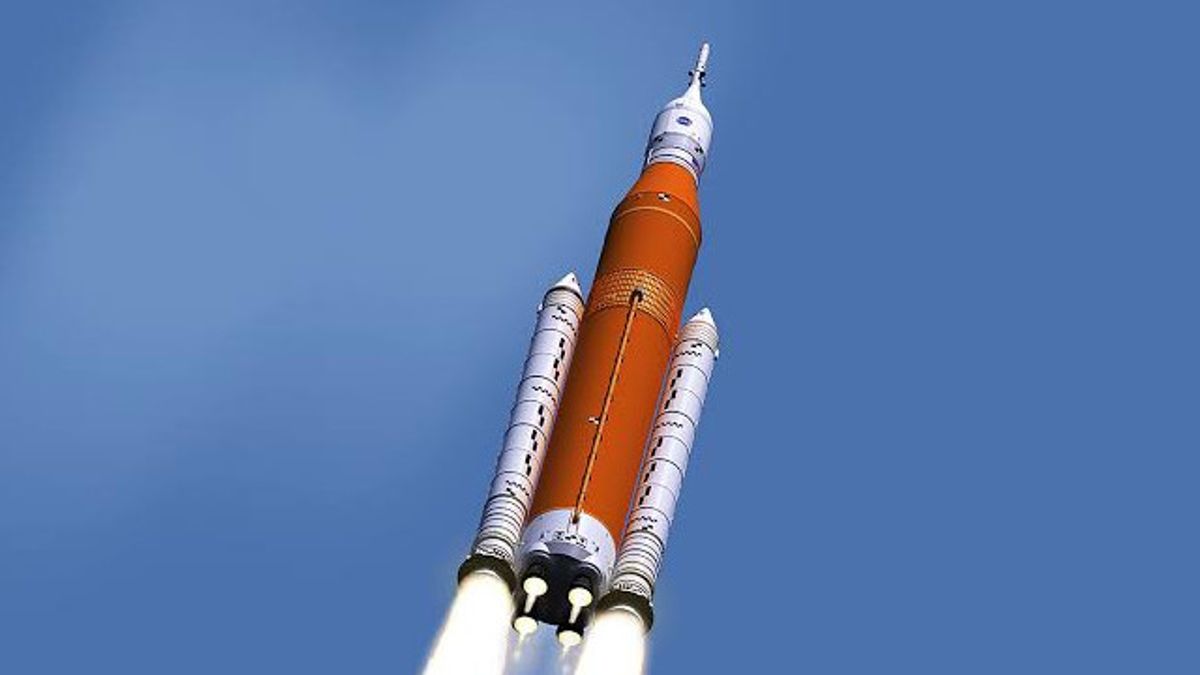
JAKARTA - The National Aeronautics and Space Administration (NASA) has just released a list of launch dates for the mission to the Moon, dubbed Artemis I. The plan is to start on July 26 this year until June 2023.
According to NASA's official statement, the Artemis I mission will be the debut of the Space Launch System (SLS) giant rocket and the second orbital flight of the Orion spacecraft.
The mission will begin with an unmanned demonstration mission, which could last anywhere from 26 to 42 days as Orion flies into a distant retrograde orbit around the Moon. However, this mission could fail or suffer unforeseen obstacles, including orbital mechanics.
"The resulting trajectory for any given day must ensure Orion is not in darkness for more than 90 minutes at a time so that the solar array's wings can receive and convert sunlight into electricity and the spacecraft can maintain optimal range temperatures. Mission planners omitted potential launch dates that will send Orion into an extended eclipse during flight," NASA said.
This launch may also undergo minor changes as mission planning is refined. Including the date set for 2023.
"The date range is not intended to convey anything about a possible launch in 2022 or 2023," said NASA spokeswoman Kathryn Hambleton.
"All launch dates longer than about two months are preliminary. It is standard for teams to have an initial view of the next few months. We will set more specific targets once we have completed the wet-shirt rehearsal testing."
If all goes well with the final preparations before the Artemis I mission, it looks like NASA could launch the SLS rocket in late August. The plan was confirmed by NASA administrator Bill Nelson, "We will launch it in August," he said.
However, the August launch is still speculative, and more likely in September or later this year, given the much work NASA still has to do.
Even so, NASA's head of human exploration, Jim Free, said the space agency wants to move the SLS rocket and Orion spacecraft to the launch pad by the end of May and will target early or mid-June for wet-shirt rehearsal tests.
During this test, the rocket will be fully refueled and brought within 10 seconds of engine ignition to complete the pre-launch of the vehicle and its grounding system.
NASA has attempted to complete this wet suit exercise three times this spring. Eventually, engineers decided to roll the vehicle back into the hangar at the Kennedy Space Center for modifications and repairs after a third failed attempt.
SEE ALSO:
So far, during those three tests, NASA has managed to load about half of the rocket's liquid oxygen and only a fraction of its liquid hydrogen.
The latest report states that NASA and its contractors are continuing to work on a number of issues encountered during the previous three attempts, most notably a leak in the clearance path leading to the rocket's upper stage, known as the Interim Cryogenic Propulsion Stage. Design modifications may be required.
As work is underway, it appears that large rockets will no longer be launched from the Vehicle Assembly Building this month, which may prompt the start of the next wet-dress effort as early as late June.
After the successful conclusion of these tests, the rocket will still need to be rolled back into the assembly building to arm the flight-stopping system, before finally being pushed back to the launch site for liftoff.
The English, Chinese, Japanese, Arabic, and French versions are automatically generated by the AI. So there may still be inaccuracies in translating, please always see Indonesian as our main language. (system supported by DigitalSiber.id)









